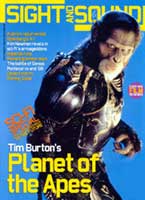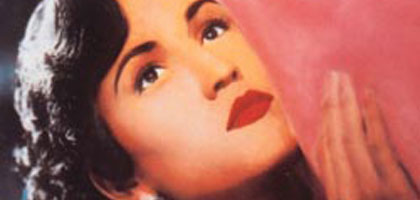
Way out east
Film of the Month: Tears of the Black Tiger

A camp Thai Western mixes singing cowboys and forbidden love. By Edward Buscombe
Informed by fellow director Burt Kennedy in the 60s that the Italians were now making Westerns, John Ford famously replied: 'You're kidding!' One can scarcely imagine his response to the news of a Thai Western. Not that eastern Westerns are such a novelty. Japanese samurai films have much in common with the Western and their influence on the genre is well known: Akira Kurosawa's The Seven Samurai (1954) was remade as The Magnificent Seven (1960) while Sergio Leone's A Fistful of Dollars (1964) was derived from Kurosawa's Yojimbo (1961). Other examples of cross-cultural fertilisation would include Kung Fu, the television series from the early 70s in which David Carradine plays a Chinese-trained martial-arts practitioner roaming the American West, and the curious Red Sun (1971), in which Kurosawa icon Toshiro Mifune is a samurai out west in the company of Alain Delon, Charles Bronson and Ursula Andress. More recently we have had Jackie Chan following in his footsteps in the cutely titled Shanghai Noon.
Has it all been one-way traffic? Whether Kurosawa and other directors were directly influenced by the Western is a subject for another occasion. But certainly Tears of the Black Tiger/Fa Talai Jone, a tale of two young lovers, poor boy Dum (Chartchai Ngamsan) and rich girl Rumpoey (Stella Malucchi), who overcome parental disapproval and rampaging bandits to stay together, makes liberal use of Western iconography. The costumes and other physical trappings seem to be drawn from B-movies of the 40s, with Gene Autry-style hand-tooled boots and embroidered shirts in gaudy colours much in evidence. Chief villain Mahesuan (Supakorn Kitsuwon) sports a pencil-thin moustache that Western heavy Roy Barcroft would have been proud of, though Dum's shoulder-holster indicates an admirable sartorial independence. In other areas it's the influence of the spaghetti Western that's paramount, with Dum's macho style of spitting a steal from Clint Eastwood. In the shoot-outs director Wisit Sasanatieng goes for extreme close-ups of eyes or gun belts à la Leone, and even makes a direct crib of the opening of Once Upon a Time in the West (1968) where the water drips on to Woody Strode's hat. As the bandits ride out there's Morricone-type whistling on the soundtrack and in the final sequence a close-up slow-motion shot of two bullets meeting in mid air would suggest a study of Sam Raimi's The Quick and the Dead (1995), itself a film whose spaghetti influences are patent.
On the other hand Tears of the Black Tiger seems quite uninterested in the ideological baggage of the American Western. There's nothing about the frontier, the community, or even any soul-searching about why a man's gotta do what a man's gotta do. In narrative terms the centre of the film is the rather mawkish romance between Dum and Rumpoey, which fails to make much of the social divide that separates them and never works up much passion, with not even a suspicion of rumpoey-pumpoey.
What makes the film different, and curiously seductive, is its look. From the very first shot - of Rumpoey in a scarlet dress standing in a riverside pagoda in the rain - the images call attention to themselves. Sasanatieng, a screenwriter and commercials director making his feature debut, saturates the screen with rich hues of turquoise, pink and lime green. The effect is reminiscent not so much of B-Westerns themselves, most of which were in black and white, as of the stencil-coloured stills that were hung outside the movie theatres. Sasanatieng himself relates the design to the bright colours of everyday Thai objects, clothes, houses and advertising hoardings, but the film is miles away from realism. The colour values were obtained by transferring the film negative to video and tweaking it before putting it back on celluloid. Always attractive and sometimes breathtaking, the result perhaps owes something to Andy Warhol's screenprints of Marilyn Monroe, Elvis Presley or Chairman Mao. Like them, it takes material which has become banal through sheer familiarity and reworks it in lurid colours that make it strange, producing that 'shock of the new' modernism has always sought.
There's been nothing quite like it in the Western, with the possible exception of Rustlers' Rhapsody (1985), an unfairly forgotten Tom Berenger parody which had fun with singing cowboy costumes and sunsets. But Tears of the Black Tiger goes further. At one point Dum plays the harmonica Rumpoey has given him (definitely an Autry touch) against a huge yellow sun painted on a backdrop. This isn't a set painted to deceive (as in the ships painted in at the end of the street in Hitchcock's Marnie). Nor is it a Godard-style alienation device, reminding us we are only watching a movie. In fact, this is more postmodernism than modernism, producing a surface texture which is only surface. Whereas Hitchcock and Godard subordinate the surface to a hierarchy of discourse (in Hitchcock's case the narrative is supreme, in Godard's the ideological argument), in Tears of the Black Tiger there is only pastiche, a play of images for their own sake.
If pastiche is one mark of postmodernism, hybridity is another - the mixing of borrowings from a diversity of sources. An expert in Thai popular culture could doubtless trace many more references. According to the screening notes, the story begins in World War II; evacuation from Bangkok explains the removal of Rumpoey's wealthy family to the country. The UK-release version of the film doesn't make this clear, but to judge from Rumpoey's clothes (Doris Day-type shirt-waisters) the main part of the narrative is set in the 50s, which would fit. But whether this period setting carries any significance would require more contextualisation than I can offer.
One wonders what audience the film's British distributors are hoping for. The action (read: fighting, shooting, killing) is tame by contemporary Hollywood standards, nor does the film have the balletic beauty of the best Hong Kong martial-arts movies. And it's not standard arthouse fare either: far from offering a commentary on sexual politics, late capitalism or any of the other favoured topics of art cinema, it's a movie, ultimately, about nothing at all. But then, so was Crouching Tiger, Hidden Dragon, and look what happened to that.
